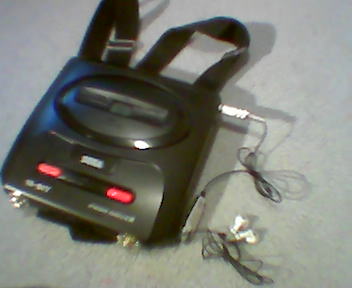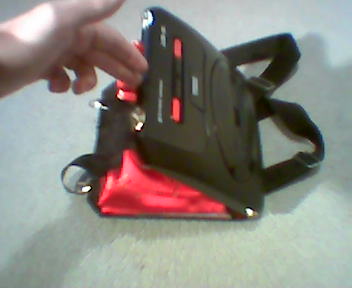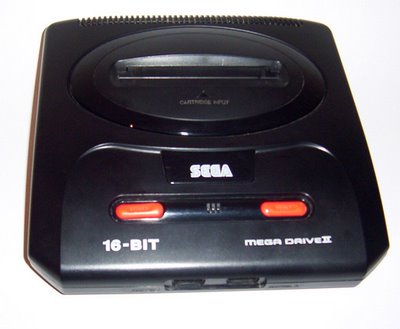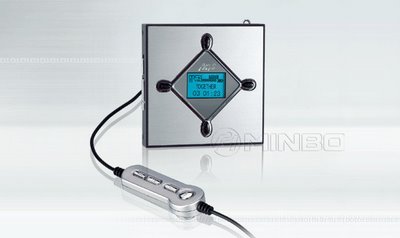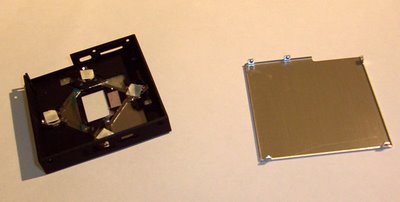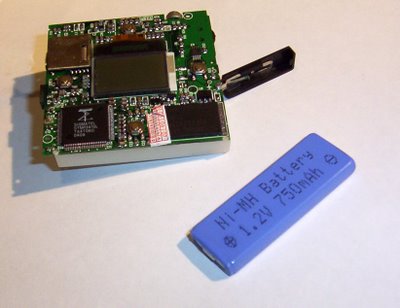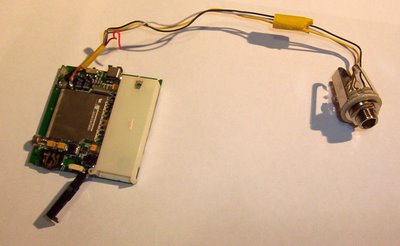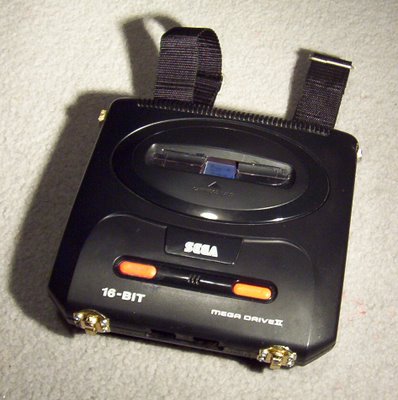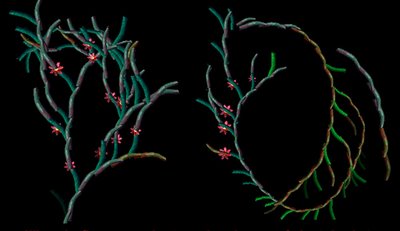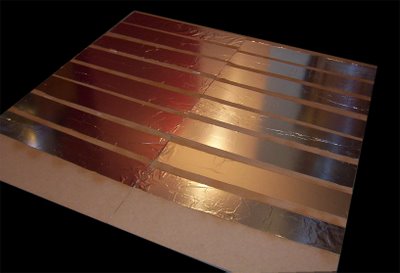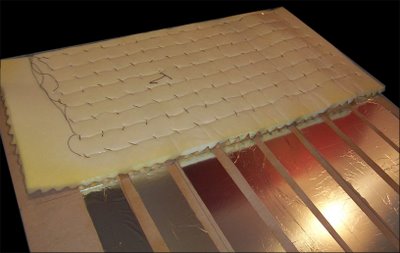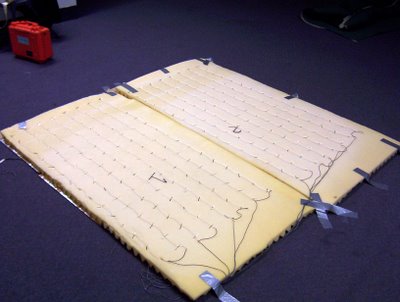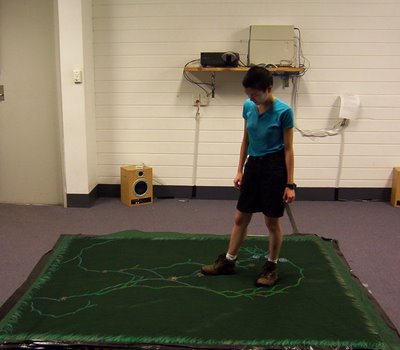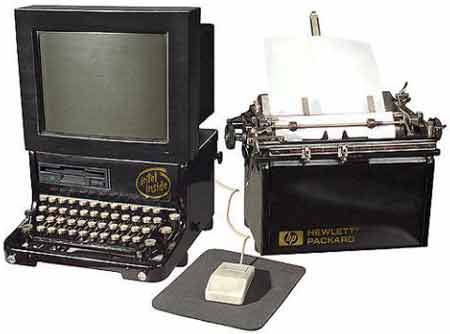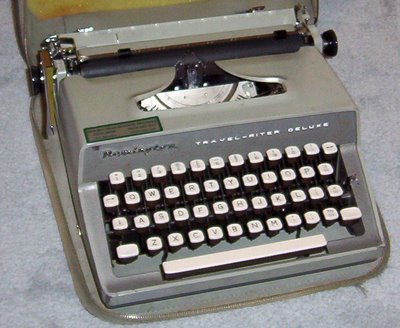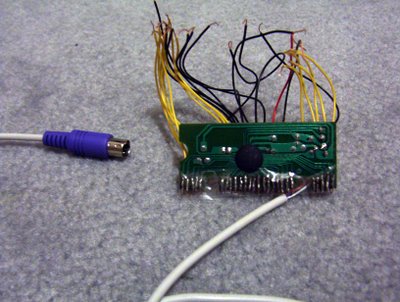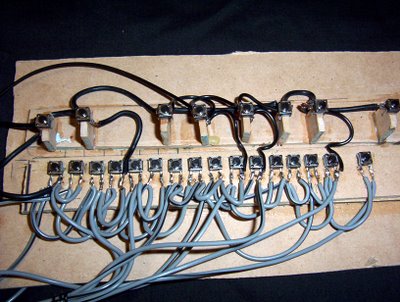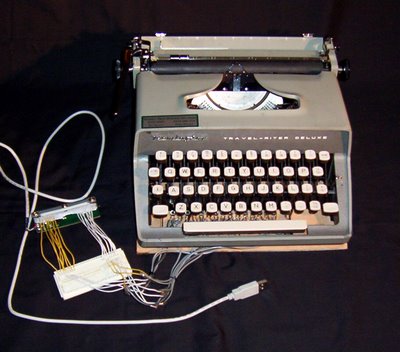Seeing these laughing infants run around with Playstations strapped to their backs, I thought "hmm, I could do that with my Sega..." and suddenly, wide awake, I sat bolt upright and said "Yes! It must be done!"
Having removed the precious innards from my console, I pulled out my Arlec Supertool, fitted a grinding bit, and set about grinding out the interior space until it was a hollow shell.
Looking at the big red buttons on the top of the Sega gave me another idea: build in an MP3 player, controlled by the buttons. Having only two buttons, I would have to find some way of controlling all the other functions. My other problem was where to put the battery compartment, and I considered putting a hinge on the Mega-CD port on the side of the console, and attaching the batteries there.
I was thus overjoyed to find my local Dick Smith store was selling a rebadged "DSE" player, which after much detective work I identified as a Minbo MB-800. A decent MP3 player in its own right, with 256MB of memory, SD card port, built-in radio and a nice little screen, it had several features that made it particularly appropriate for this job. Being very flat, it could be mounted under the Sega cartridge port without intruding into the interior space, the inline remote control would let me get away with only having two buttons on the main unit, and the built-in rechargeable battery (a tiny NiMH designed for MiniDisc players) would free me from having to add a battery compartment.
I removed the tiny screws from around the casing, and pulled off the metal back plate. I was actually impressed to find an off-brand flash-based player like this using a metal case.
The main circuit board had the usual teeny-tiny smd components used in consumer electronics, but the only points I really had to get to were the solder tabs on the "Play/ON" and "Stop/OFF" buttons, since everything else could be controlled by the remote.
The underside of the PCB carries the SD card socket, the battery holder, and the headphone/remote plug. I extended this plug to a 6.5mm jack, because I like big shiny headphone plugs and I think they look hi-fi and old skool. The exposed traces visible at the bottom of this image are for the "Menu" button, which I later extended to a discreet black button on the side of the Sega.
I drilled out holes for the headphone and USB sockets and connected the external buttons, then cut a square hole in the cartridge slot cover for the screen.
The other part of my mod involved adding hinges between the top and bottom halves of the Sega, putting brass latches on the other end to hold it closed, lining the inside to contain any items placed in the backpack, and adding adjustable backpack straps.
As an extra touch, I arranged through one of Ylana's close friends to pilfer her CD collection, and preload the player's memory with some of her favourite albums.
I couldn't get to my camera when I took these next pictures, so they are a bit blurry, having been taken with my mobile phone. The second one shows the red chinese-print fabric I used on the sides of the lining. The interior of the compartment is covered with black fur. The red and black fits in well with the Megadrive colour scheme, while the fabrics add a feminine touch to a gift intended for a lady.
